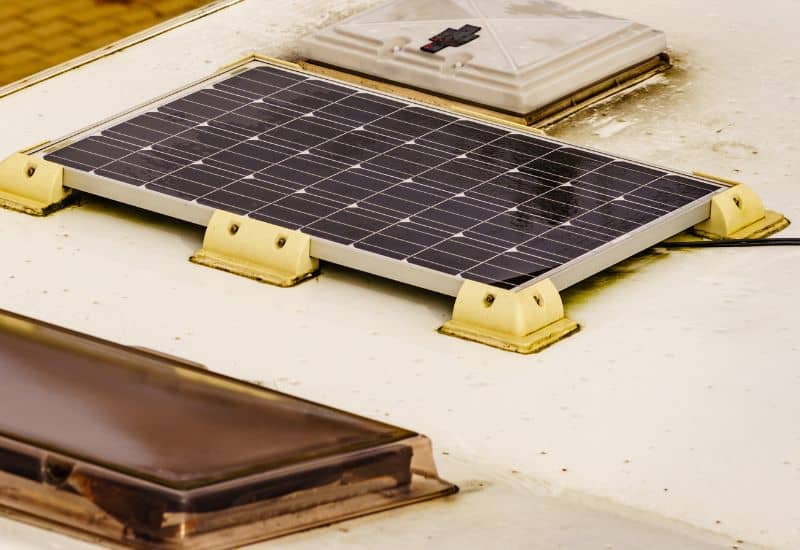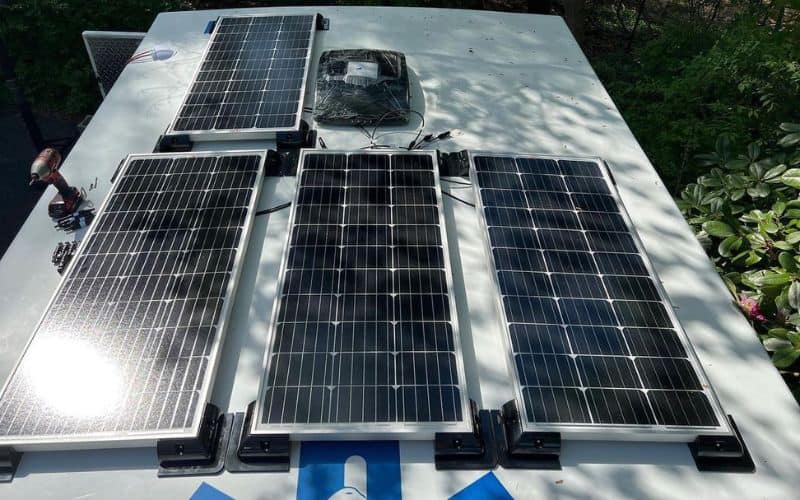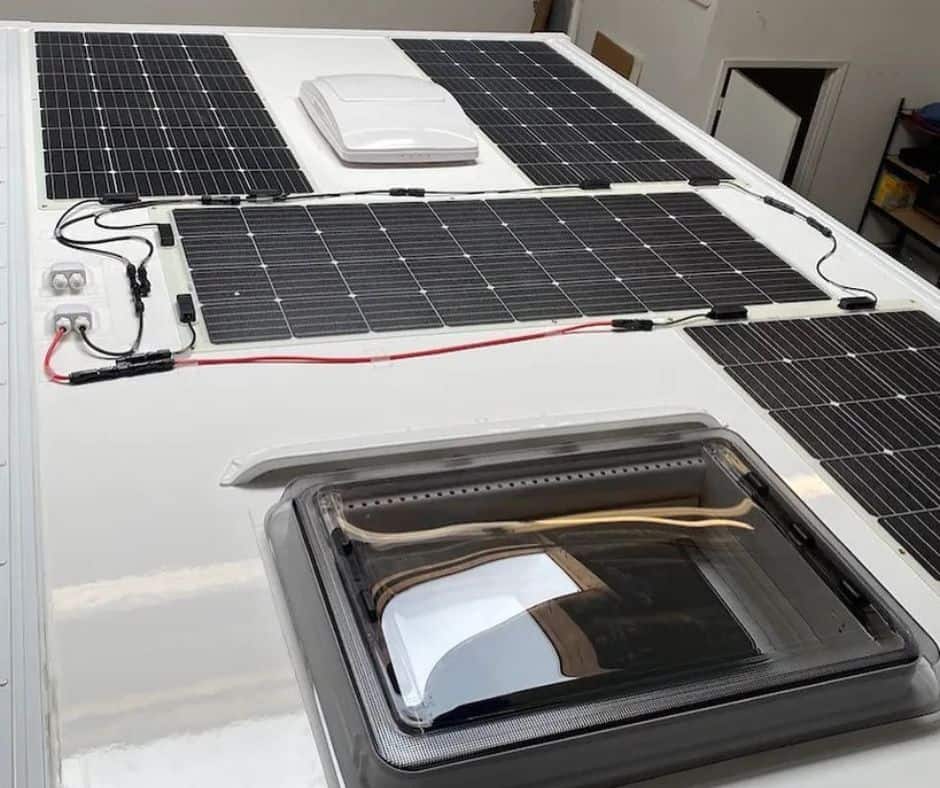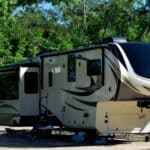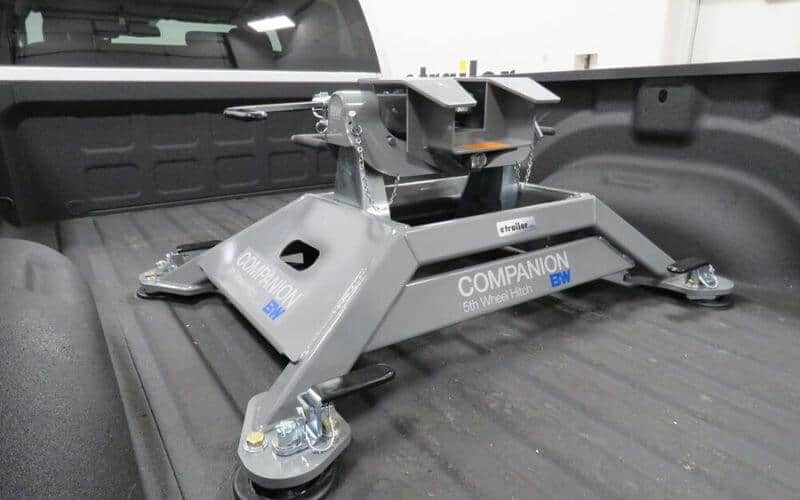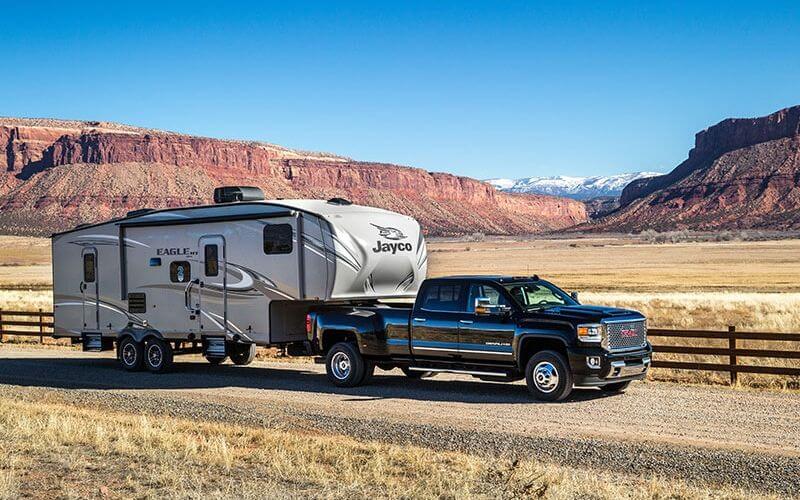If you plan on taking your RV off-grid for extended periods of time, having adequate power is an absolute must.
Solar panels are the perfect solution for creating highly efficient, renewable energy that your RV can utilize when you’re out camping away from hookups.
Many RVers install solar panels on their roof to maximize sun exposure and they do so by drilling brackets directly into the roof.
However, for most people, the idea of drilling holes into your RV roof (and potentially opening it up to leaks) is a terrifying thought.
Luckily, there are a variety of ways to install RV solar panels without drilling. This guide will cover all you need to know.
Reasons to Mount RV Solar Panels Without Drilling
If you’re considering mounting solar panels to your RV roof, there are many reasons why you should opt for a non-drilling method.
What Type of Solar Panel Should I Use?
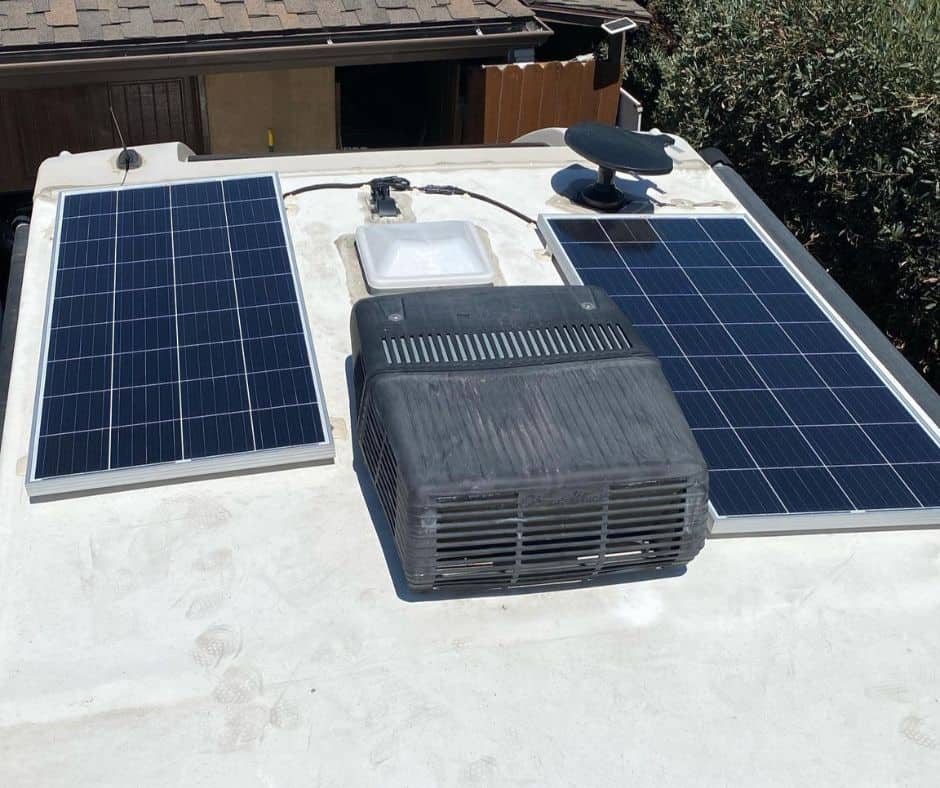
When mounting solar panels to your RV roof without drilling, you first need to consider which type of solar panel to use.
Solar panels for RV use come in two different kinds: rigid solar panels with an aluminum frame, and lightweight, flexible solar panels.
In general, you can utilize either type of panel for your RV, but there are instances when one might be more useful than the other.
For example, rigid panels cannot bend, so they must be mounted on a flat surface with no curvature.
Rigid panels can still be installed on a curved roof or fifth wheel header, but a custom mount must be fabricated.
Flexible panels on the other hand are perfect for curved applications. The panel can be bent and fitted to the contour of the roof.
Flexible solar panels are also a great option when adding additional weight to your roof might be an issue.
What are the Pros and Cons of Rigid and Flexible Solar Panels?
As stated, rigid and flexible solar panels each have their own unique applications and restrictions. Here is a quick breakdown of the pros/cons associated with each type:
Rigid Solar Panel
| Pros | Cons |
|---|---|
| Durable | Heavy |
| Cost-effective | Not flexible |
| More efficient | Harder to mount |
| Longer lifespan |
Flexible Solar Panel
| Pros | Cons |
|---|---|
| Lightweight | Not as durable |
| Flexible | Expensive |
| Easier to mount | Less efficient |
| More applications | Shorter lifespan |
3 Ways To Mount Solar Panels On RV Roof Without Drilling
Once you’ve decided on the type of solar panel you’d like to use – either rigid or flexible – it’s time to mount them!
There are a variety of methods for mounting panels without drilling with each being dependent on the type of solar panel you wish to use.
Let’s look at some options and the advantages associated with each.
1. Solar Panel Corner Brackets
One of the best solutions for mounting solar panels to your RV roof without drilling is by using corner brackets.
These brackets, normally made of ABS plastic, attach to the four corners of your solar panels and are adhered to the roof of your RV by using silicone glue.
Many kits also come with two additional brackets that attach to the middle of the long sides of your solar panel, for extra support.
These mounting kits are readily available and normally quite inexpensive for the capability they provide.
They are priced at $15-$30 per kit but keep in mind that each kit is only for one solar panel.
If you have a larger solar setup with multiple panels, this can easily add up to a couple of hundred dollars.
Corner brackets are only for rigid, aluminum-framed solar panels. They will not work with flexible panels.
These brackets are installed in a few simple steps:
- Place corner brackets on the solar panels in all spots they will be installed; mark holes.
- Drill holes through each marked area.
- Using the provided nuts and bolts, fasten the brackets to the solar panel.
- Apply silicone adhesive (I recommend Sikaflex 252 or similar) to the underside of brackets and place it on the desired roof location.
Advantages of Using Corner Brackets
Choosing to use plastic corner brackets to mount your solar panels comes with many advantages:
2. VHB Tape
VHB is an affordable, lightweight solution for mounting solar panels without drilling.
It is an extremely strong double-sided tape that can be applied easily, and quickly to solar panels.
Despite its ease of use, VHB is not strong enough to adhere rigid solar panels to an RV roof and must strictly be used with flexible solar panels only.
It should be noted as well that VHB tape cannot be applied to rubber roofs.
The application of VHB tape is incredibly simple:
- Remove the plastic membrane from one side of the tape; stick to all bottom edges of the solar panel. It’s also recommended that you apply tape to the inner areas of the solar panel in a plus sign pattern to ensure the panel will be completely secured.
- Remove the plastic membrane from the other side of the tape; firmly press the solar panel onto the desired roof location.
When applying this tape, make sure that the area is free of dust and debris and that it is not too humid or cold outdoors.
Advantages of Using VHB Tape
Compared to ABS plastic solar panel mounts, VHB tape has its unique advantages:
3. Using Portable Solar Panels
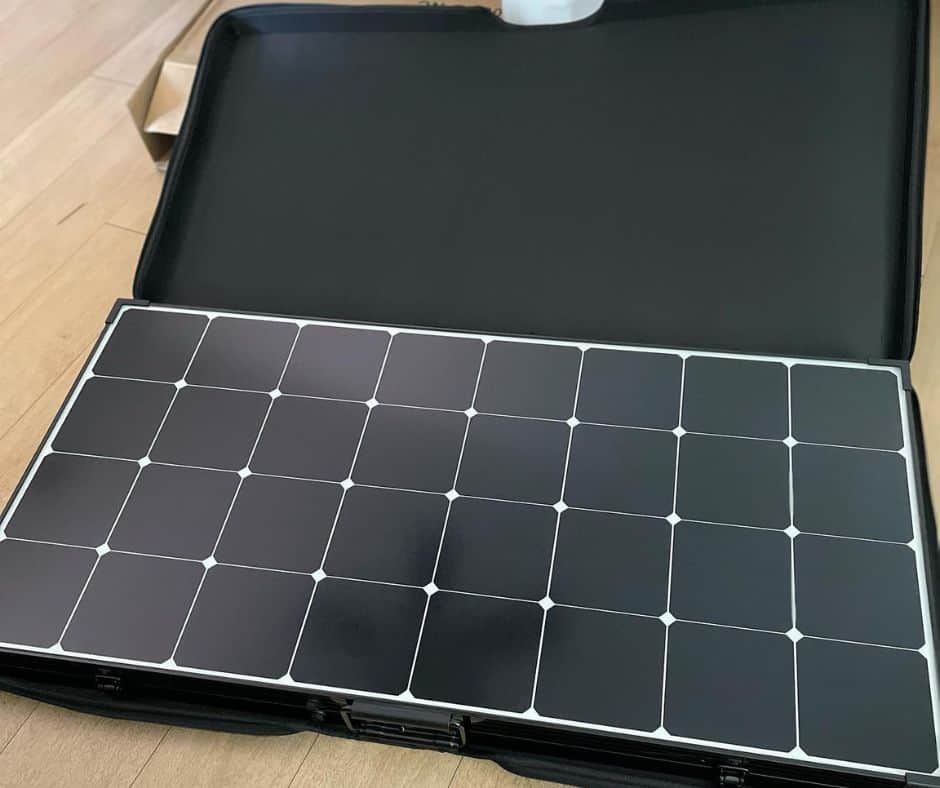
Even if none of these installation options work for you, you can still harness the energy of the sun by using portable solar panels.
These types of solar panels are a great alternative to traditional installations for RVers that may not be willing to undertake a DIY project.
Portable solar panels come ready to use and just require a simple setup.
The two most common types of portable solar panels are:
Suitcase Solar Panels
Suitcase solar panels usually come as a folding set of two 50-watt panels.
These two panels are attached by a hinge and when folded out form a complete 100-watt solar panel.
Normally there is also an adjustable kickstand on the panel so that it can be stood upright, or at the desired sun angle.
Suitcase solar panels derive their name from when they are folded up.
They generally have a handle attached to the side of one of the panels so that it can be easily carried when folded.
Suitcase panels also commonly come with a carrying case, making transportation easy.
Set up with a suitcase solar panel is a breeze. Simply attach the alligator clamps to the positive and negative terminals of your RV battery, connect the panels to the attached solar charge controller, and just like that you are all powered up.
Foldable Solar Panels
Foldable solar panels are incredibly similar to suitcase panels and have the same functionality.
The only difference is that these solar kits generally have more than two panels, and they fold up accordion style.
The setup process is also identical to the suitcase panels – simply attach the clamps to the battery terminals, and you’re good to go.
Benefits and Drawbacks of Portable Solar Panels
Suitcase solar panels and foldable solar panels have many benefits that differentiate them from traditional mounted solar panels:
However, with this ease of function comes significant sacrifice:
Conclusion
Solar panels are the most efficient way of powering your RV when out boondocking and are a necessity for full-time RVers looking to avoid camping in RV parks.
Installing solar panels on your RV can be an intimidating task, but in most circumstances, it is a project that can be done DIY.
While directly attaching solar panels to your roof via drilling is a common approach, there are a variety of ways to mount solar panels without drilling for those that don’t feel comfortable putting holes in their RV roof.
For those that desire no installation whatsoever, portable solar panels offer a great solution for quick and easy solar power.
Whichever method you prefer, I hope that this guide helped you determine the best way to install solar panels on your RV!

